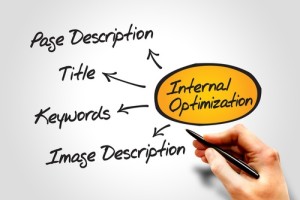
How to make sure your content pages are optimised for SEO purposes
Whilst SEO isn’t really quite what it used to be, on-page optimisation is still alive and well. There are simple steps you can take to make sure the content pages on your website are SEO friendly. It’s not only best practice, it helps the search engines to understand what each page is about as well as those people that come to your website. Each page needs to be thought about in terms of what the user is looking for and also what the search engines are looking for.
A page with purpose
The first thing to think about is what is the purpose of your content page? What information are you trying to share? By thinking about the needs of your customers and potential customers you should be able to produce content that is of value to them and has a goal in mind for you. For example I might have a page explaining how to install a radiator, but by doing so I might be illustrating that this is a difficult job and it would be much better for the website visitor to contact us and install it for them. By giving all of the facts it becomes easier for people to make a decision about whether this is something they can, or would want to do themselves.
Once you understand the purpose of your page it is worth doing some research to find out what people are searching for on Google, identify a long-tailed keyphrase that is relevant. This is what you will build your content page around because this is what will attract visitors to your website in the first place.
URL
Ensure your keywords are included in the URL of your content page.
Meta Title
Include your keywords in your meta title, this is what people see in the search results and so make it engaging so that people will want to click through to your website instead of your competitors. Your meta title should be less that 70 characters long, a lot of web editors will have the functionality that tells you the length but if not you can check it in Word.
Meta Description
This should also include your keywords, think about using semantics here. Search engines are very good at working out common themes and so don’t simply ‘stuff’ keywords in as many times as possible. This should be less than 150 characters. Again, this appears in the search engines (although more and more we are seeing search engines choosing the text they display) so make it engaging.
The content itself
Write naturally about your chosen subject, if you try and write for SEO purposes it will often come across as a little stilted and repetitive. The days of writing paragraph after paragraph saying the same thing in a different order are simply gone. Think about your end user, what information are they looking for.
Think about how to make the page interesting to look at by using headings, bullets, bold, italics, images and video wherever relevant. Breaking up the text will make it easier to read.
Aim for a minimum of 250 words for a content page, but again if you are writing naturally about a subject that you are experienced in, the words should simply flow and you may find yourself having to edit and simplify your content. Try not to use lots of jargon or technical language, making your content easy to read and understand will keep visitors to your website coming back for more.
Titles and H Tags
A H tag is a little snippet of code that surrounds titles on your page, this tells the search engines what the page is about and also what different sections of your content are about. Again use semantics here so that you aren’t including the same words again and again for each title. Not only do titles help to educate the search engines, they also improve the reading experience for your users and tell them what each section is focused on.
You can use different types of H tag depending on how your content is laid out, for example, you would usually see a H1 tag used as the title at the top of the page, then further down the content H2 and H3 tags for section headers.
Links
It is always good to include links to other pages on your site that may be useful for your users. They may want to read up on related subjects, or simply need some guidance on where to go next to find more informatin.It also helps to tell the search engines which pages are related to each other and can even identify the most important pages on your website (usually the most linked to).
Don’t be afraid of using external links where relevant, if you add the link so that it opens the page up in a new tab then your user can easily click back onto your website. If you find a resource that is good quality and interesting, then why not share it?
CTA’s
CTA’s are call to actions, they prompt action and will usually link through to a landing page, additional content or a form. They are a great way of helping your users find their way through your website and get to the pages that are of most interest to them. A CTA will often include an offer of some kind and can take your user further along the buying journey.
The reason I mention them here is that it is best practice to have them on almost every page on your website. Call to Actions should have a link behind them, so they will also link relevant pages and help a search engine decipher the most important elements on your website.
Images and Video
Using images is a great way to make your page more engaging, but don’t forget to add Alt text and Image titles so that a search engine knows what your images are. At the moment search engines can’t read pictures and so by missing out alt text and images titles you are not fully optimising your page.
Video is another great addition, one of the best ways to use video without slowing down your page speed is by hosting the video on YouTube and embedding it into the page. One of the great things about YouTube currently is that you can still optimise videos along the lines of more traditional SEO and it can be much easier for your video to be highly ranked in the search engines than your content pages (YouTube is also a search engine by the way).
Social Sharing
Include social sharing buttons on your content pages to make it easy for visitors to your website to share the page with their own network, this helps increase your reach and hopefully encourage others to visit your website too.
You can also include links through to your own social accounts to encourage people to connect that way, but make it clear which social icons are doing what or it could get confusing.
Summary
By taking these steps to optimise your content pages you can improve your chances of being ranked highly by the search engines as well as providing visitors to your website a great user experience. You can of course do all of this work yourself, but as I mentioned earlier you should always have a call to action and so……
If you would like to find out more about how we can help you optimise your website then give us a call today on 01279 647003 or ask us a question on our Facebook page






